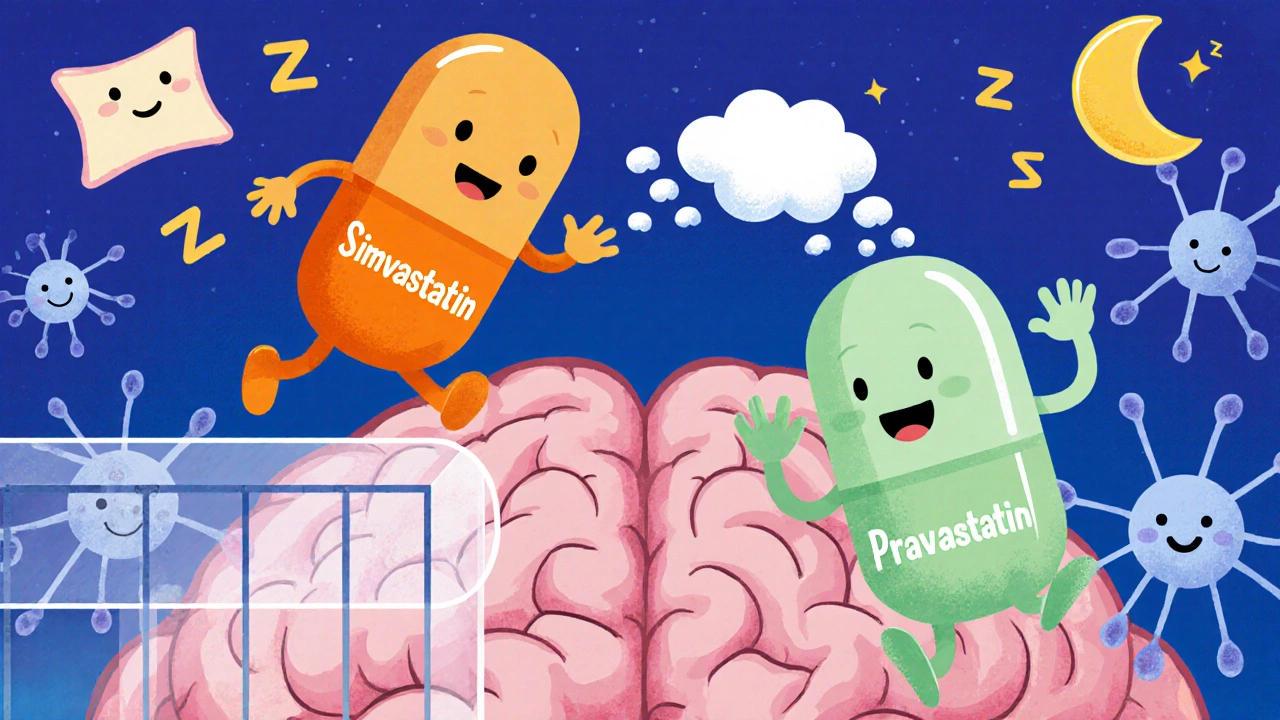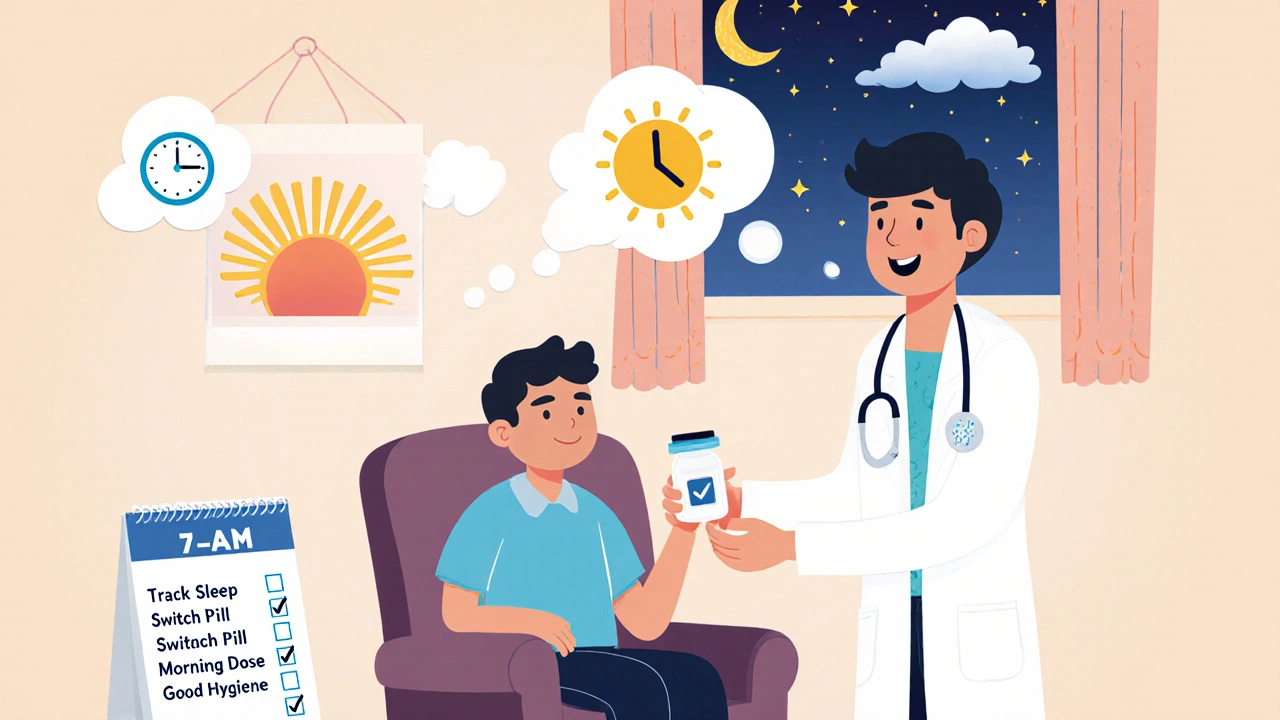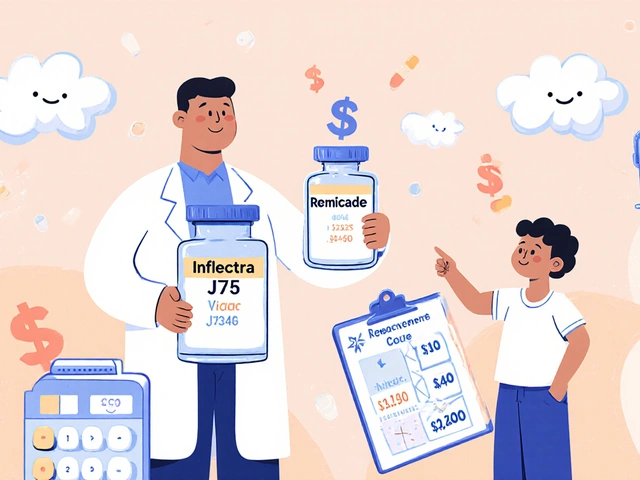Statin Sleep Risk Comparison Tool
Which Statin Are You Taking?
This tool helps you compare the sleep disturbance risk of different statins based on clinical evidence. Choose your statin to see its sleep risk profile.
Sleep Risk Profile
Select a statin to view its sleep disturbance risk information
What This Means for You
Select a statin to see personalized recommendations.
When you hear about statins are HMG‑CoA reductase inhibitors used to lower cholesterol and reduce cardiovascular risk, you probably think of heart health, not bedtime woes. Yet a growing number of patients report insomnia or vivid dreams after starting these pills.
What Are Statins and Why Do People Take Them?
Statins were introduced with lovastatin’s FDA approval in 1987 and quickly became the workhorse of modern preventive cardiology. By 2023 more than 300 million prescriptions were written worldwide, helping lower LDL‑cholesterol and cut major vascular events by roughly 22 % for each 1.0 mmol/L reduction (Cochrane 2010).
How Could a Cholesterol Drug Mess With Your Sleep?
The link isn’t obvious, but several biological pathways have been proposed. First, some statins are lipophilic have high log P values, allowing them to cross the blood‑brain barrier more easily. This property could let the drug interact with neurotransmitter systems that regulate sleep stages.
Second, the notorious Statin‑Associated Muscle Symptoms (SAMS) include muscle pain and weakness that can disturb night‑time comfort. A 2024 study showed SAMS patients improved their sleep efficiency by 3.8 % after stopping the statin, suggesting a secondary muscle‑pain‑driven insomnia.
What Does the Research Say?
Evidence is a mixed bag. A 2015 meta‑analysis of five randomized trials (9 treatment arms, ~1,200 participants) found no statistically significant impact of statins on total sleep time, sleep efficiency, or latency to stage I sleep (Broncel et al.). In contrast, a 2007 trial by Golomb showed that Simvastatin a lipophilic statin with log P ≈ 4.4 users reported worse sleep quality than both Pravastatin a hydrophilic statin with log P ≈ 0.6 and placebo participants.
Large‑scale registry work adds nuance. The FDA Adverse Event Reporting System (FAERS) flagged a reporting odds ratio (ROR) of 2.17 for sleep disturbances with simvastatin, while atorvastatin’s ROR hovered around 1.05 (Takada et al., 2014). A 2018 Lancet study of 10,000 atorvastatin users even found fewer sleep complaints than placebo (absolute risk reduction 0.9 %).

Which Statins Are Most Often Linked to Insomnia or Vivid Dreams?
| Statin | Log P (lipophilicity) | ROR for Sleep Disturbances | Key Findings |
|---|---|---|---|
| Simvastatin | 4.4 | 2.17 (FAERS) | Worse sleep quality vs. pravastatin & placebo (Golumb 2007) |
| Lovastatin | 4.3 | 1.63 (FAERS) | Mixed results; some case reports of insomnia |
| Rosuvastatin | 2.1 | 1.52 (FAERS) | Modest increase; not consistent across trials |
| Pravastatin | 0.6 | 0.98 (FAERS) | No significant sleep impact in multiple trials |
| Atorvastatin | 1.5 | 1.05 (FAERS) | Lower sleep‑disturbance rates than placebo (Lancet 2018) |
Practical Tips for Patients Who Notice Sleep Problems
- Track baseline sleep. Use a simple tool like the Pittsburgh Sleep Quality Index (PSQI) before starting therapy.
- Ask your clinician about starting low and going slow. A low dose of a hydrophilic statin often achieves the same LDL reduction with fewer CNS side effects.
- If insomnia or vivid dreams appear within 2-4 weeks, discuss a possible switch. Many clinicians move patients from simvastatin or lovastatin to pravastatin or rosuvastatin.
- Consider timing. Some studies suggest evening dosing may worsen vivid dreams, while morning dosing eases them, though data are still limited.
- Rule out the nocebo effect. A 2018 placebo‑controlled study showed that expectations can amplify perceived side effects; a brief counseling session may help.

When to Change or Stop the Medication
Evidence suggests that most sleep‑related complaints resolve after 2-4 weeks of discontinuation. However, abrupt stopping can raise LDL sharply, so any change should be clinician‑guided. If symptoms persist despite a switch, consider a short trial off the drug paired with lifestyle lipid‑lowering measures (diet, exercise) before restarting a different statin.
Future Research Directions
Researchers are now probing three hot topics:
- Objective sleep measurement. Polysomnography studies are being designed to capture stage‑specific changes.
- Genetic predictors. Variants in CYP3A4 may affect how much lipophilic statins reach the brain.
- Statin timing trials. Ongoing NCT04567891 will compare bedtime CBT‑I versus statin cessation for patients with self‑reported sleep issues.
Until robust data arrive, clinicians should continue individualized assessment, weighing cardiovascular benefit against any bothersome night‑time symptoms.
Frequently Asked Questions
Can statins really cause vivid dreams?
Yes, several pharmacovigilance reports link lipophilic statins-especially simvastatin and lovastatin-to unusually vivid or even bizarre dreams. The exact mechanism isn’t settled, but blood‑brain barrier penetration is a leading hypothesis.
Is insomnia a common side effect of all statins?
No. Large meta‑analyses show no overall increase in insomnia rates across all statins. The risk appears higher with lipophilic agents and lower with hydrophilic ones like pravastatin.
Should I stop my statin if I can’t sleep?
Don’t quit on your own. Talk to your doctor. Often a dose reduction or a switch to a hydrophilic statin eases the problem without sacrificing heart protection.
Do lifestyle changes help if statins affect my sleep?
Yes. Good sleep hygiene-regular bedtime, limited caffeine, screen‑free wind‑down-can mitigate mild insomnia. In some cases, adding a brief course of CBT‑I is effective.
Are there any statins that have no reported sleep issues?
Atorvastatin, fluvastatin and pitavastatin consistently show ROR values around 1.0, indicating no excess sleep‑disturbance reports in large databases.






6 Comments
I swear my nights turned into a horror movie after starting simvastatin!
Oh, because everyone loves a good midnight nightmare, right? The literature clearly shows that only the most “brain‑friendly” statins, like pravastatin, keep your sleep intact while the lipophilic ones audition for a role in your REM theater. If you’re chasing cholesterol numbers, consider swapping to a hydrophilic option before you start counting sheep that look like cholesterol molecules.
If you notice sleep changes after a new statin, first log your bedtime patterns for a week using a simple questionnaire, then discuss dose timing or a switch with your clinician.
Honestly, the only sensible move is to stick with the proven Aussie‑approved statins and ditch the fancy lipophilic experiments – they’re just a brain‑yoyo.
Look, statins aren’t magic pills that fix everything, and the side effect list includes insomnia for a reason – don’t ignore it.
maybe it's just a placebo effect you think i mean the brain knows its own rhythm